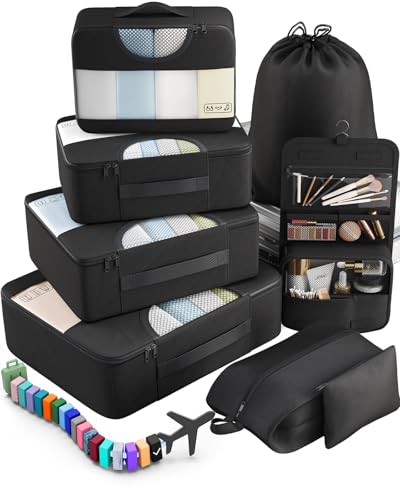In Paro, they use Type C, D, and G power plugs and outlets. The voltage is 230V, and the frequency is 50Hz.
So, you’ll need a travel adapter in Paro. Their plugs and outlets are different from the Type A and B ones we use back in the States.
Quick Overview of the Plugs in Paro:
- Plug type in Paro: C, D, and G
- Standard voltage: 230V
- Frequency: 50Hz
- Need a travel adapter? Yes, you do need a travel adapter
- Need a voltage converter? It varies by device — check the label
- Recommended plug adapter: Vintar Universal Travel Adapter Kit
All information is gathered from official sources like local power authorities, IEC standards, and firsthand traveler experiences to ensure accuracy.
The Only Travel Adapter You’ll Need in Paro
I’ve made the mistake before—landing in a new country and realizing my charger was useless. That’s why we did the legwork to find the best travel adapter for Paro. We don’t sell them, but after checking voltage, safety, and reliability, this one is the clear winner:
Recommended Travel Plug Adapter
by 1,000+ travelers on Amazon
Already traveling or just arrived and forgot your power adapter? It happens, and you’ll likely find one locally. But when you bring a trusted one from home, you know it’s the right fit, safe to use, and won’t let you down.
Paro travelers frequently continue on to Nepal, India, or Bangladesh. Be sure to confirm plug compatibility.
Power Outlets in Paro
In Paro, they use Type C, D, and G power plugs and outlets.
Type C

Type C outlets have two round prongs and no grounding pin. Type E and F plugs usually fit too, but grounded plugs will need an adapter.
Type D

Type D outlets have three large round prongs in a triangular layout and typically only accept Type D plugs, although Type C plugs might fit loosely and are not recommended for safe use.
Type G

Type G outlets have three rectangular prongs in a triangular layout and built-in fuses. Other plug types won’t fit without an adapter.
Do You Need a Voltage Converter?
Since Paro has a different voltage than the U.S. (120V), you’ll probably need a voltage converter to keep your devices running smoothly.
Always verify the voltage rating on your device before packing it for a trip. If it reads “100-240V, 50/60 Hz”, it’s designed for international use and works with both 120V and 220-240V without needing a converter. Many phones, laptops, and rechargeable gadgets have this feature.

Which Travel Devices May Need a Converter?
Need a reliable voltage converter? These are the top picks according to real reviews — check them out.
| Device | Need Converter? | Notes |
|---|---|---|
| Phone | ❌ No (usually) | Most modern phone chargers are dual voltage (100–240V) |
| Laptop | ❌ No (usually) | Check the power brick label for 100–240V |
| Hairdryer | ✅ Yes (often) | High wattage; many models are not dual voltage |
| Electric toothbrush | ⚠️ Check voltage | Some models are 110V only |
| Camera / DSLR | ❌ No (usually) | Most chargers are dual voltage |
| Power bank | ❌ No | Charges via USB, adapter is enough |
| Electric shaver / trimmer | ⚠️ Check voltage | Older or cheaper models may not support 230V |
| Tablet / iPad | ❌ No | All models are dual voltage |
| Portable fan | ✅ Yes (sometimes) | Many models are not compatible with 230V |
| Game console | ⚠️ Check voltage | Newer consoles like PS5 and Xbox are often dual voltage — check to be sure |
| Bluetooth speaker | ❌ No (usually) | Charges via USB |
| E-reader (Kindle, etc.) | ❌ No | USB charging only, no converter needed |
Top Travel Essentials to Pack
Packing isn’t just about clothes and chargers. These extras help you travel with less stress and more comfort.
Digital Luggage Scale
Packing Cubes
Power Bank
More About Paro
Paro is probably the first place you’ll see in Bhutan, and it doesn’t disappoint. The flight into the valley is one of the most dramatic in the world—pilots weave between mountains before landing on a runway that looks barely long enough. Once you’re on the ground, it’s calm, green, and full of quiet charm. No big city noise, just fresh air and a whole lot of tradition.
This is where you’ll find Tiger’s Nest, the cliffside monastery that looks like something out of a dream. It’s a hike to get there—steep and sometimes misty—but once you reach it, the view and energy of the place make every step worth it. Paro also has one of the oldest and most beautiful dzongs in Bhutan, and the town itself is lined with traditional wooden buildings that haven’t changed much in decades.
What’s cool about Paro is that it’s deeply historic, but still alive and grounded. You’ll see monks checking their phones, farmers loading up fresh produce, and kids playing soccer in the dzong courtyard. It’s not trying to impress anyone—it just is what it is. And that’s what makes it such a great place to start your Bhutan journey.
Paro uses the same plugs and outlets as the rest of Bhutan.




